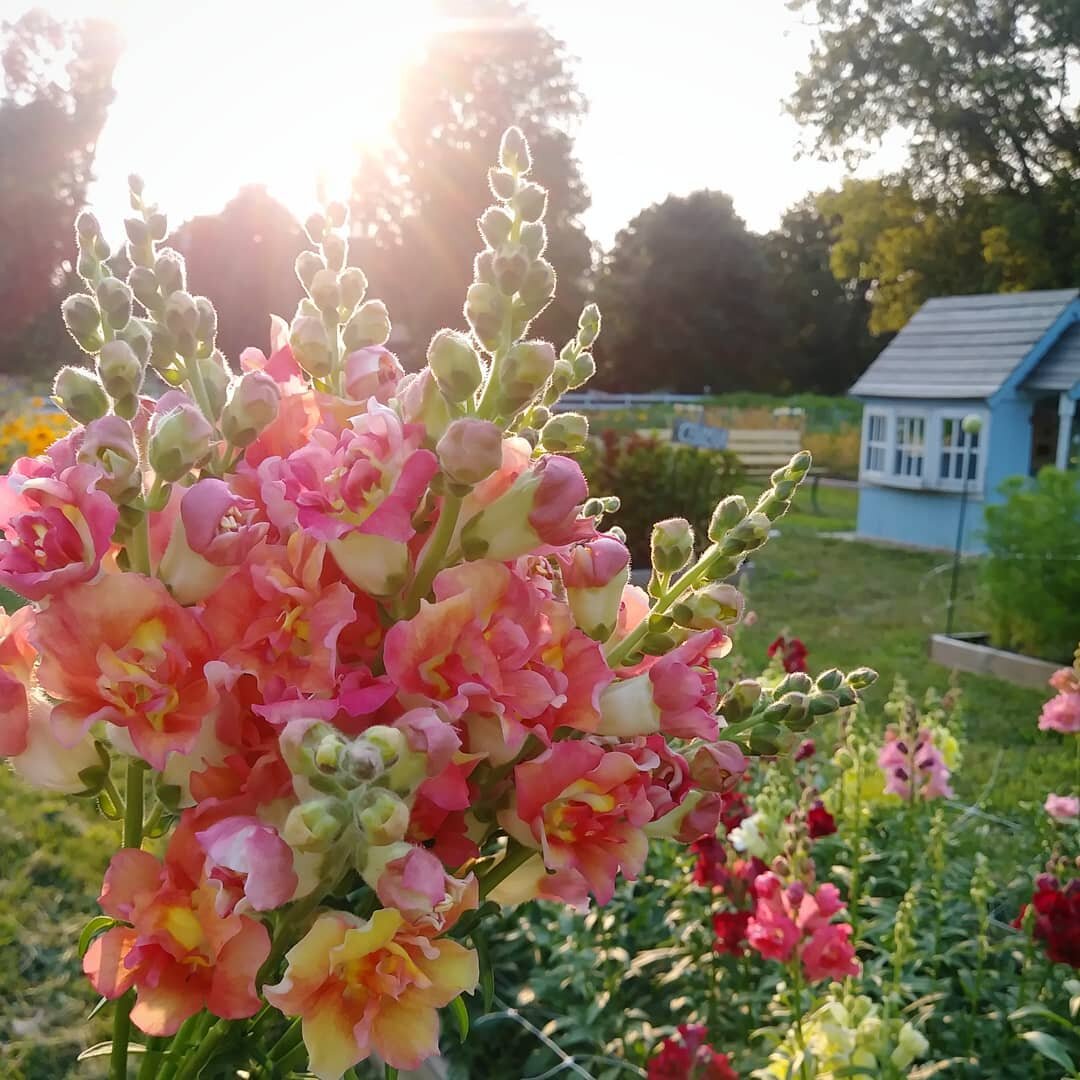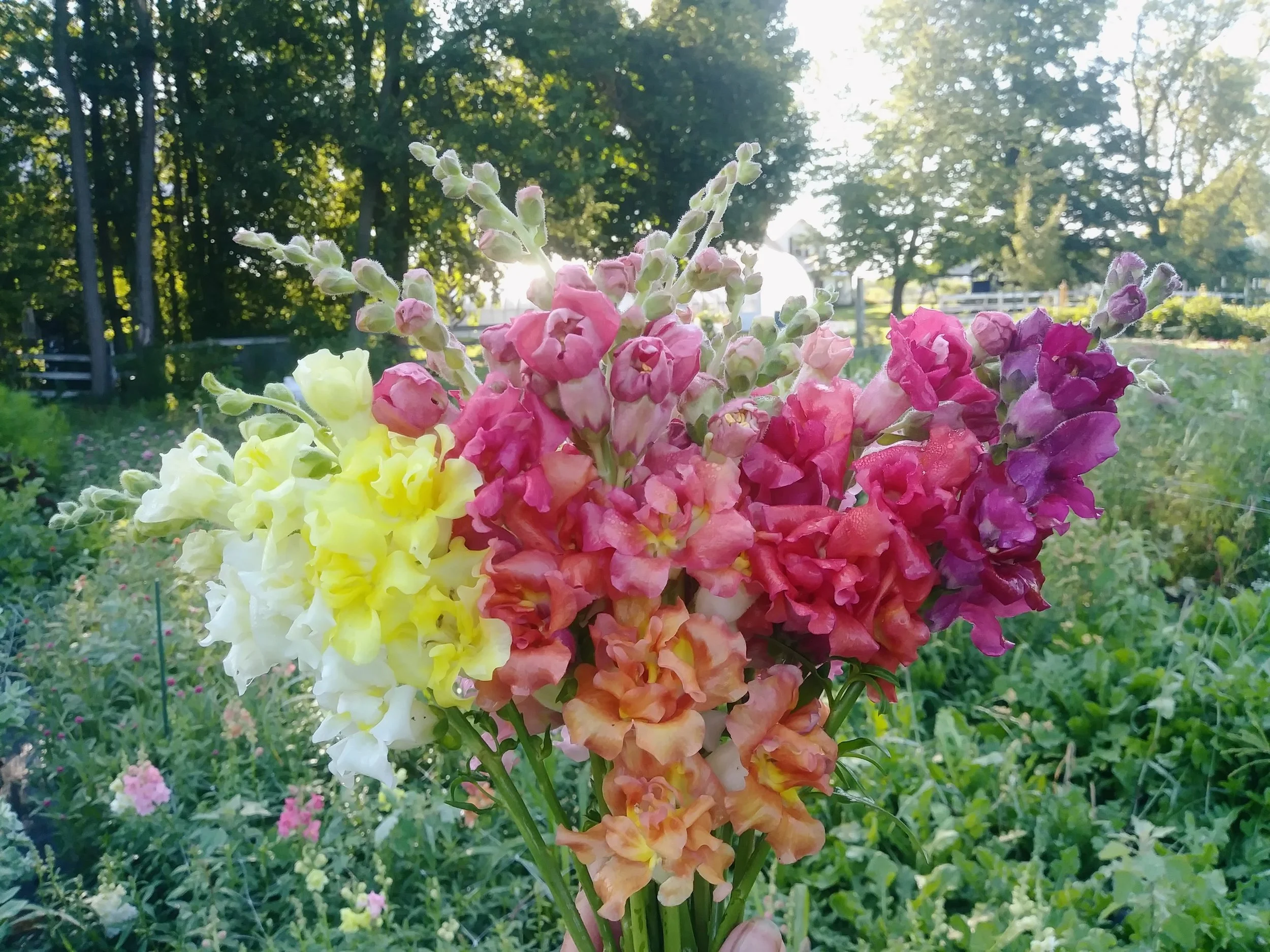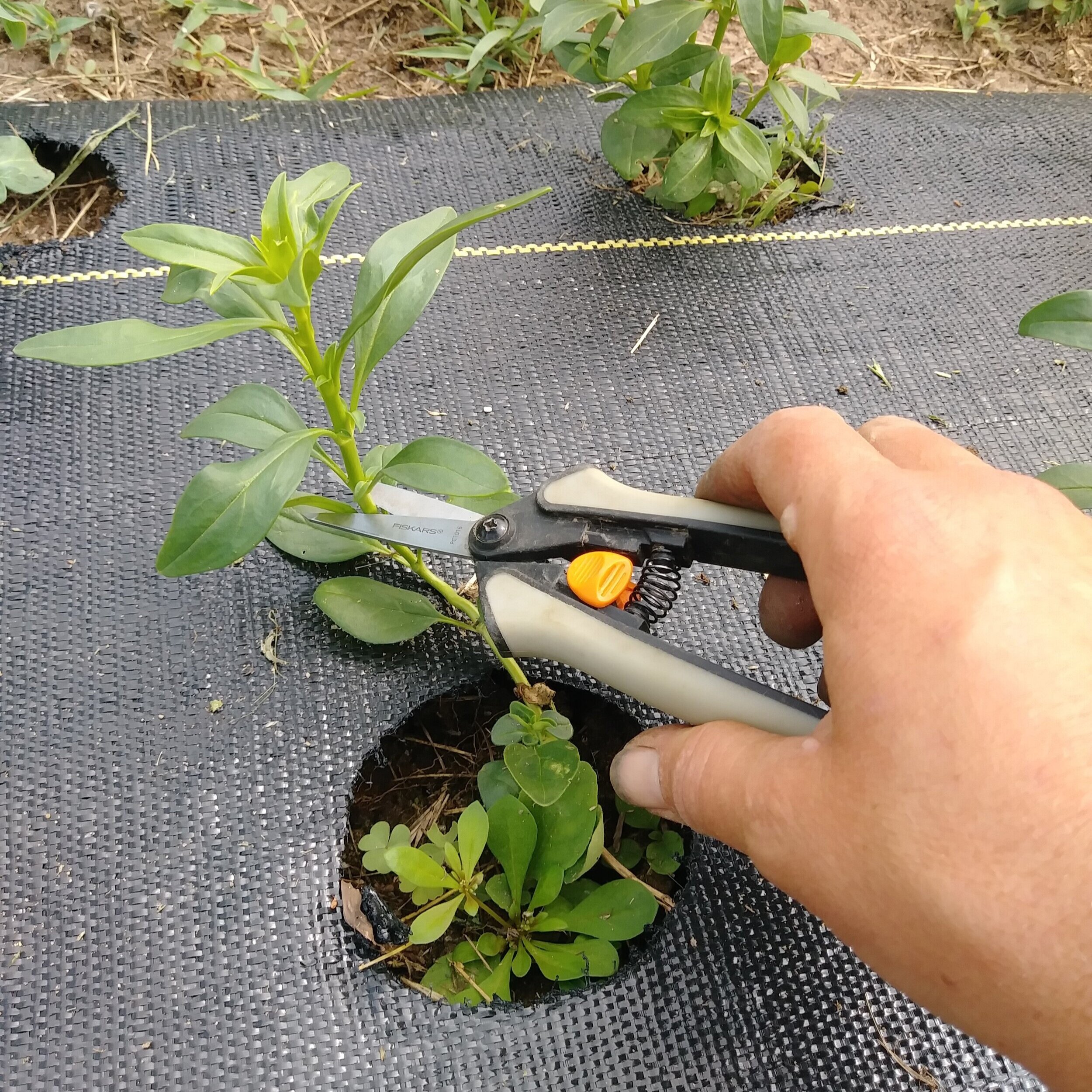How to Grow: Snapdragons
How to Grow: Snapdragons
Snapdragons are the unsung hero of the cutting garden. In fact, they are one of my favorite cut flowers!
I’ve always wondered why they were not more popular… Maybe it’s because they don’t have a “round shaped” bloom, like a Daisy, Zinnias, Sunflower, Rose, etc.
Let me tell you though, these beautiful “spike” type flowers will bring your bouquets to the next level. It’s important to have a variety of lines and shapes in bouquets and Snapdragons are the perfect addition.
Let’s look at the Pros and Cons of growing Snapdragons for cut flower use.
PROS
They come in a multitude of colors.
They are perfect for bouquets.
They have an excellent vase life, sometimes lasting 2 weeks if harvested at the proper stage.
CONS
They can be a little tricky to start from seed. If you are a beginner at seed starting, I recommend skipping these until you’re more skilled and confident.
They can be difficult to find as transplants. You might be able to find transplants at your local nursery, but many of the varieties offered at nurseries are bred for landscape use, not cut flower use (you want to choose varieties that reach at least 18” tall).
They slow down in the heat. If you live in a place with hot summers, they may stop blooming. Here in Michigan, they bloom in June, slow down considerably in July/August, then bloom again in September. They are frost hardy and I’ve even had Snapdragon blooms all the way into November!
“Madame Butterfly Mix” Snapdragon
“Rocket White” Snapdragon
CHOOSING SEEDS
As mentioned above, you want to choose varieties that will reach at least 18” tall for cut flower use.
Snapdragon seeds often come in a mix of assorted colors, as well as single colors. Here are my favorite Snapdragons to grow for cut flower use:
“Rocket Bronze” Snapdragon
HOW TO SOW
Snapdragons can be a little tricky to start from seed. For best results, I like to keep the seeds in the freezer until I’m ready to sow them. This mimics their natural life cycle of germinating after a season of cold temperatures.
Snapdragon seeds are absolutely tiny. Seriously, they look like dust. It will make your eyes cross when you’re planting the seeds! Be sure to put on your glasses!
I sow 2 seeds per cell (they don’t need to be thinned, if both germinate).
To sow them, I put the seeds in a small dish or jar, lick the end of toothpick and use the toothpick to pick up 2 seeds. No, I am NOT joking! I wish I was! This is the best method for sowing tiny seeds, like Snapdragons and Poppies.
Gently transfer the seeds to the cell and sprinkle a dusting of soil over them, so they are not completely covered.
Because Snapdragons take so long to grow, direct sowing is not recommended.
Transplants should be started 8-10 weeks before your Average Last Spring Frost. For example, our Average Last Spring Frost is May 15, so I need to start my Snapdragon seeds indoors in early to mid March.
PLANT SPACING
Transplants should be spaced at 6-9” apart. Close spacing encourages longer stem growth.
GROWING ON
Once the transplants have a few sets of leaves and have been hardened off, they can be planted outside. They are “frost hardy” and can handle a light frost.
After the transplants are established and growing, it’s important to “pinch back” the plants. To pinch, simply use a clippers to remove the top of the plant, only leaving 2-3 sets of leaves behind.
Pinching signals the plant to go into overdrive and send out multiple branches, with multiple blooms.
Check out the plant in the photo below - this was taken a few weeks after pinching and now the plant has tons of branches that produce lots of blooms.
Some people leave a few unpinched on purpose, simply to get early blooms. This is a good way to extend the bloom time of your Snapdragons.
After the spring/early summer flush of blooms, Snapdragons take a break during the summer heat. You can pinch back the plants again to 2-3 sets of leaves… and they will bounce back in the fall, sending up another flush of blooms.
STAGE OF HARVEST
Snapdragons should be harvested when 1-2 florets on the stem has opened. The rest should still be closed. As always, harvest in the cool of the day - morning or evening.
“Madame Butterfly Bronze with White” Snapdragon
POST HARVEST CARE
Snapdragons require no special care after harvesting.
QUESTIONS?
Questions or comments? Leave them below and I’ll get back to you!
Ready for more?
If you’re serious about growing the garden of your dreams this year, register for my online course, “Backyard Cutting Garden 101”. You’ll find everything you need to plan, grow, harvest and arrange your stunning blooms. I can’t WAIT to help you grow! Click on the button below for all the details.










